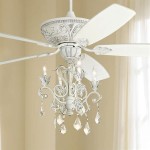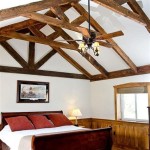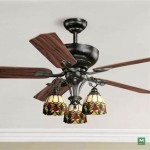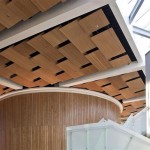Cost of False Ceiling Installation in One Room in Portland, Oregon
False ceilings, also known as suspended ceilings or drop ceilings, are a popular architectural element often used to enhance the aesthetics, functionality, and acoustics of a room. In Portland, Oregon, where diverse architectural styles and renovation needs exist, the demand for false ceiling installations in residential and commercial spaces remains steady. Understanding the factors influencing the cost of installing a false ceiling in a single room is crucial for homeowners and business owners in the Portland area planning such a project.
The cost of a false ceiling installation in a single room is not a fixed figure. It fluctuates based on several variables, ranging from the size of the room itself to the chosen materials and labor rates prevalent in the region. Ignoring these factors can lead to inaccurate budgeting and potentially derail the project before it even begins. This article aims to provide a comprehensive overview of the elements that determine the final cost, thus enabling informed decision-making for those considering this renovation in Portland.
Generally, the cost of installing a false ceiling will be broken down into three primary areas: materials, labor, and any ancillary costs. Materials encompass the ceiling tiles themselves, the grid system used to suspend them, and any necessary fasteners or accessories. Labor covers the cost of professional installation, which is typically calculated per square foot or hour. Ancillary costs may include delivery charges, waste disposal fees, and permit applications if required by local building codes. A thorough assessment of each of these aspects is vital for accurate cost estimation.
Key Factors Influencing Material Costs
The choice of materials is one of the most significant factors determining the overall cost of a false ceiling. Different materials offer varying levels of durability, aesthetics, and acoustic performance, each carrying a corresponding price tag. The material selected will impact not only the initial expense but also the long-term maintenance requirements and lifespan of the ceiling. A careful evaluation of the available options is necessary to balance cost-effectiveness with desired functionality.
Acoustic ceiling tiles are frequently chosen for rooms where noise reduction is a priority. These tiles are designed to absorb sound waves and reduce reverberation, creating a more comfortable and functional environment. The cost of acoustic tiles varies depending on their sound absorption coefficient (NRC rating) and the material they are made from. Higher NRC ratings typically correspond to higher prices. Materials used can range from mineral fiber to fiberglass to specialized foam, each with its own cost bracket.
Gypsum ceiling tiles are another common choice, offering a smooth, paintable surface that can be easily customized to match the existing décor. Gypsum is a relatively inexpensive material, making it a budget-friendly option for those seeking a clean and modern look without excessive expense. However, gypsum tiles may not offer the same level of acoustic performance as specialized acoustic tiles. Their resistance to moisture and mold can also vary, potentially requiring additional treatments or protective coatings.
Metal ceiling tiles provide a durable and aesthetically versatile option, often used in commercial spaces and modern residential designs. They can be made from aluminum, steel, or other metals, and are available in a wide range of finishes, including powder-coated colors, brushed metal, and embossed patterns. Metal tiles tend to be more expensive than gypsum or mineral fiber tiles, but they offer superior durability and resistance to moisture and fire. The complexity of the design and chosen finish will further impact the price.
Furthermore, the grid system used to support the ceiling tiles also contributes to the material cost. The grid is typically constructed from metal channels that are suspended from the existing ceiling structure. The type of metal used, the gauge (thickness) of the channels, and the complexity of the grid design will all influence the price. Heavier-duty grids are necessary for heavier tiles or in areas where seismic activity is a concern, reflecting in increased material costs.
The size of the room directly correlates to the amount of material required. Larger rooms necessitate more tiles and a more extensive grid system, proportionally increasing the overall material cost. Waste is also a factor to consider. During installation, some tiles may need to be cut to fit around obstacles or walls, potentially resulting in material waste. It is often advisable to purchase slightly more material than initially estimated to account for potential errors or unexpected challenges during the installation process.
Impact of Labor Costs in Portland, Oregon
Labor costs represent a significant portion of the total expense associated with false ceiling installation. Understanding the factors that influence labor rates in the Portland metropolitan area is essential for accurate budgeting. These factors encompass the skill level and experience of the installers, the complexity of the installation, and the prevailing market rates for construction labor in the region.
The skill and experience of the installers directly affect their hourly rates. Experienced and licensed contractors with a proven track record of successful false ceiling installations typically charge higher rates than less experienced or unlicensed contractors. While hiring a less experienced contractor may seem like a cost-saving measure, it can potentially lead to errors, delays, and ultimately, higher overall costs due to rework or repairs. Investigating and verifying the credentials and experience of potential contractors is therefore advisable.
The complexity of the installation also plays a role in determining labor costs. Rooms with irregular shapes, complex layouts, or numerous obstructions (such as pipes, ducts, or lighting fixtures) require more time and effort to install a false ceiling. Installation around these obstacles often necessitates precise cutting of tiles and careful placement of the grid system, increasing the labor hours required. Highly customized designs or intricate patterns can also increase labor costs due to the increased complexity of the installation process.
The prevailing market rates for construction labor in Portland, Oregon, fluctuate based on supply and demand. During periods of high construction activity, labor rates tend to increase due to increased demand for skilled tradespeople. Conversely, during economic downturns, labor rates may decrease due to reduced demand. It is advisable to obtain multiple quotes from different contractors to gauge the current market rates and ensure a competitive price.
Labor costs are typically calculated on a per-square-foot basis or on an hourly basis. Per-square-foot pricing is common for relatively straightforward installations, while hourly rates are more common for complex or customized projects. It's important to clarify with the contractor which pricing method they are using and to obtain a detailed breakdown of the estimated labor hours involved. Requesting a written contract that outlines the scope of work, the pricing agreement, and the timeline for completion is crucial for protecting both the homeowner and the contractor.
Furthermore, preparation work can add to labor costs. This may involve removing existing ceilings, patching walls, or relocating electrical wiring or plumbing. If these preparatory tasks are required, it's essential to factor them into the overall budget and to ensure that the contractor includes them in the written contract. Unforeseen issues such as asbestos in older homes can dramatically increase labor costs due to abatement requirements.
Ancillary Costs and Permit Requirements
In addition to materials and labor, several ancillary costs can contribute to the total expense of a false ceiling installation. These costs may include delivery charges for materials, waste disposal fees, permit applications, and inspection fees. Understanding these potential expenses is crucial for creating a realistic budget and avoiding unexpected financial surprises.
Delivery charges can vary depending on the distance between the supplier and the installation site, the size and weight of the materials, and the supplier's delivery policies. Obtaining quotes from multiple suppliers and comparing their delivery charges can help to minimize these costs. It may be possible to reduce delivery charges by picking up the materials yourself, but this requires careful planning and the availability of a suitable vehicle.
Waste disposal fees are incurred for the removal and disposal of construction debris generated during the installation process. This may include the removal of old ceiling materials, packaging materials, and scrap pieces of ceiling tiles and grid components. These fees can vary depending on the volume of waste and the disposal policies of local landfills or recycling centers. Some contractors include waste disposal fees in their overall price, while others charge them separately. Clarifying this detail in the contract is important.
Permit requirements for false ceiling installations in Portland, Oregon, vary depending on the scope of the project and the local building codes. In some cases, a permit may be required, particularly for commercial spaces or if the installation involves significant structural modifications or electrical work. The cost of a permit can range from a few dollars to several hundred dollars, depending on the complexity of the project and the local regulations. It is the homeowner's or business owner's responsibility to ensure that all necessary permits are obtained before commencing work. Consulting with the City of Portland's Bureau of Development Services is advisable to determine the specific permit requirements for the project.
Inspection fees may be required if a permit is obtained. After the installation is complete, a building inspector may need to inspect the work to ensure that it complies with the local building codes. The inspection fee typically ranges from a few dollars to a few hundred dollars, depending on the complexity of the project and the local regulations. Failing to obtain the necessary permits or to pass the inspection can result in fines, delays, and potentially the need to redo some of the work.
Furthermore, unforeseen issues, such as damages to existing structures discovered during the installation process, can lead to additional costs. If the existing ceiling is damaged or if hidden plumbing or electrical problems are discovered, additional repairs may be necessary. Having a contingency fund in place to cover these unexpected expenses is always prudent.
In summary, the cost of installing a false ceiling in a single room in Portland, Oregon, is influenced by a multitude of factors. By carefully considering the material costs, labor rates, and potential ancillary expenses, homeowners and business owners can create a realistic budget and make informed decisions about their renovation project. Obtaining multiple quotes from qualified contractors, verifying their credentials, and carefully reviewing the terms of the contract are essential steps in ensuring a successful and cost-effective false ceiling installation. Understanding permit requirements and adhering to local building codes are also critical for avoiding potential fines and delays.

Pop Designs For Your Home In 2024

Drop Ceiling Or Drywall Which One Should You Choose

Sakarni Gi Channels Pop False Ceiling In Residential Thickness 5 These Panels Can Be Mounted On Top Of The Existing And Finished With Any Type Drywall Paneling Or Plaster At

Pop Designs For Your Home In 2024

Pop Designs For Your Home In 2024

12 Pop Ceiling Designs For Hall Trendy Living Room 2025

Pop Designs For Your Home In 2024

12 Pop Ceiling Designs For Hall Trendy Living Room 2025

Diffe Types Of False Ceiling Commonly Used In

How Much Does It Cost To Install A Drop Ceiling 2025 Data
Related Posts








